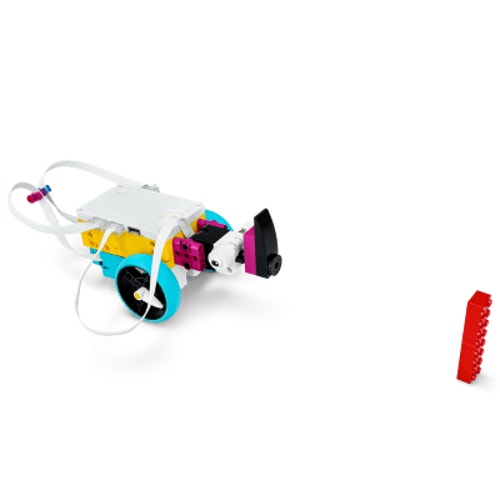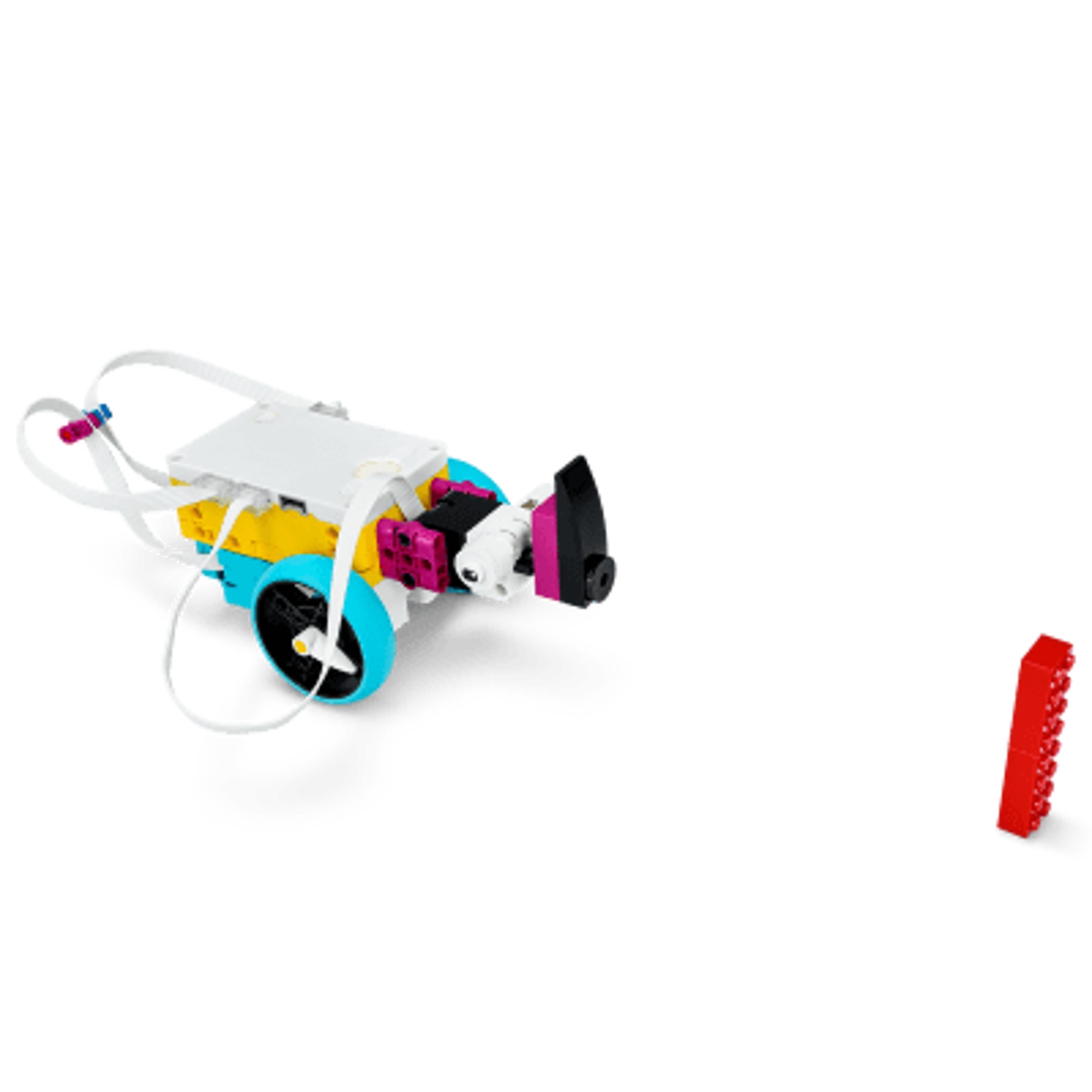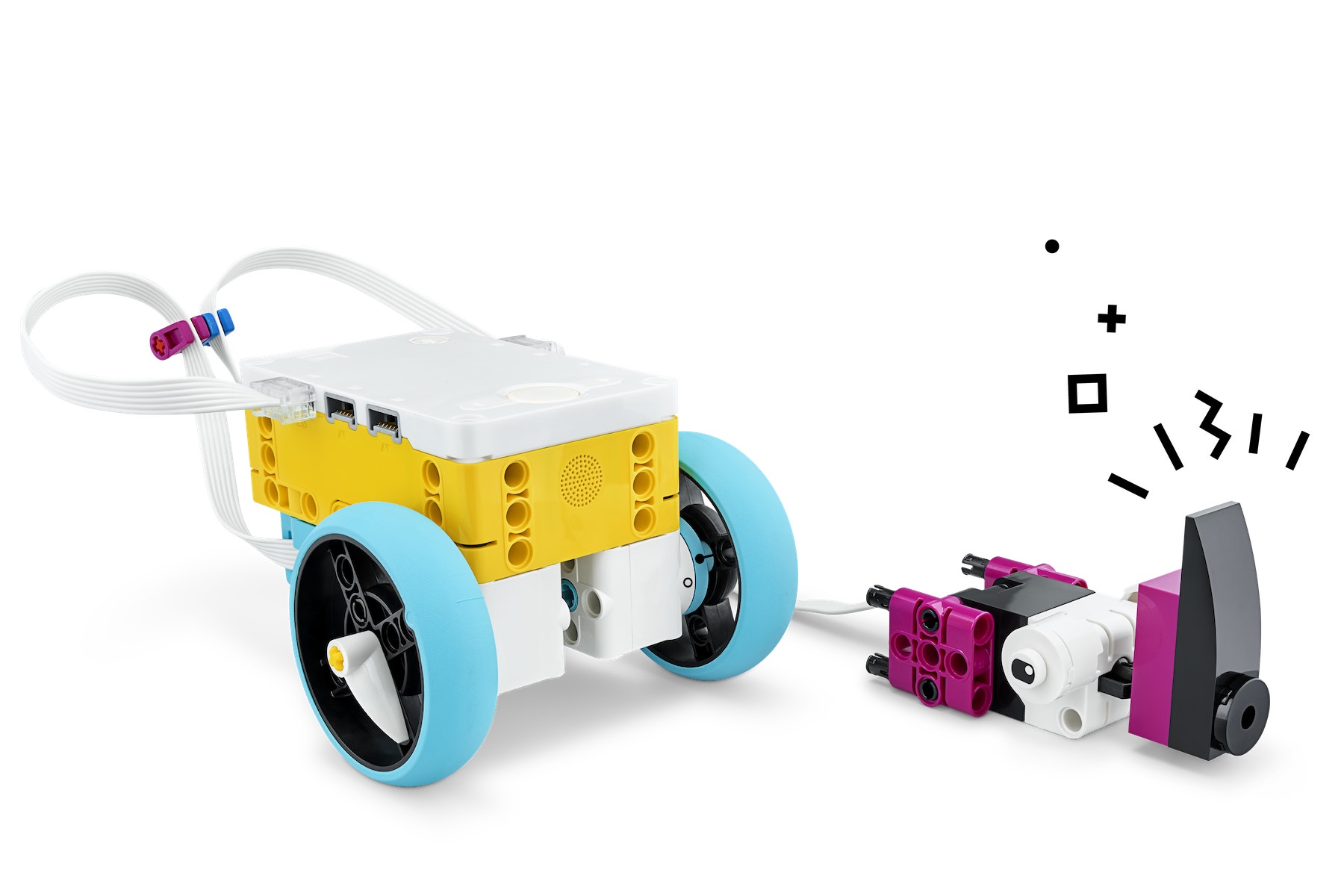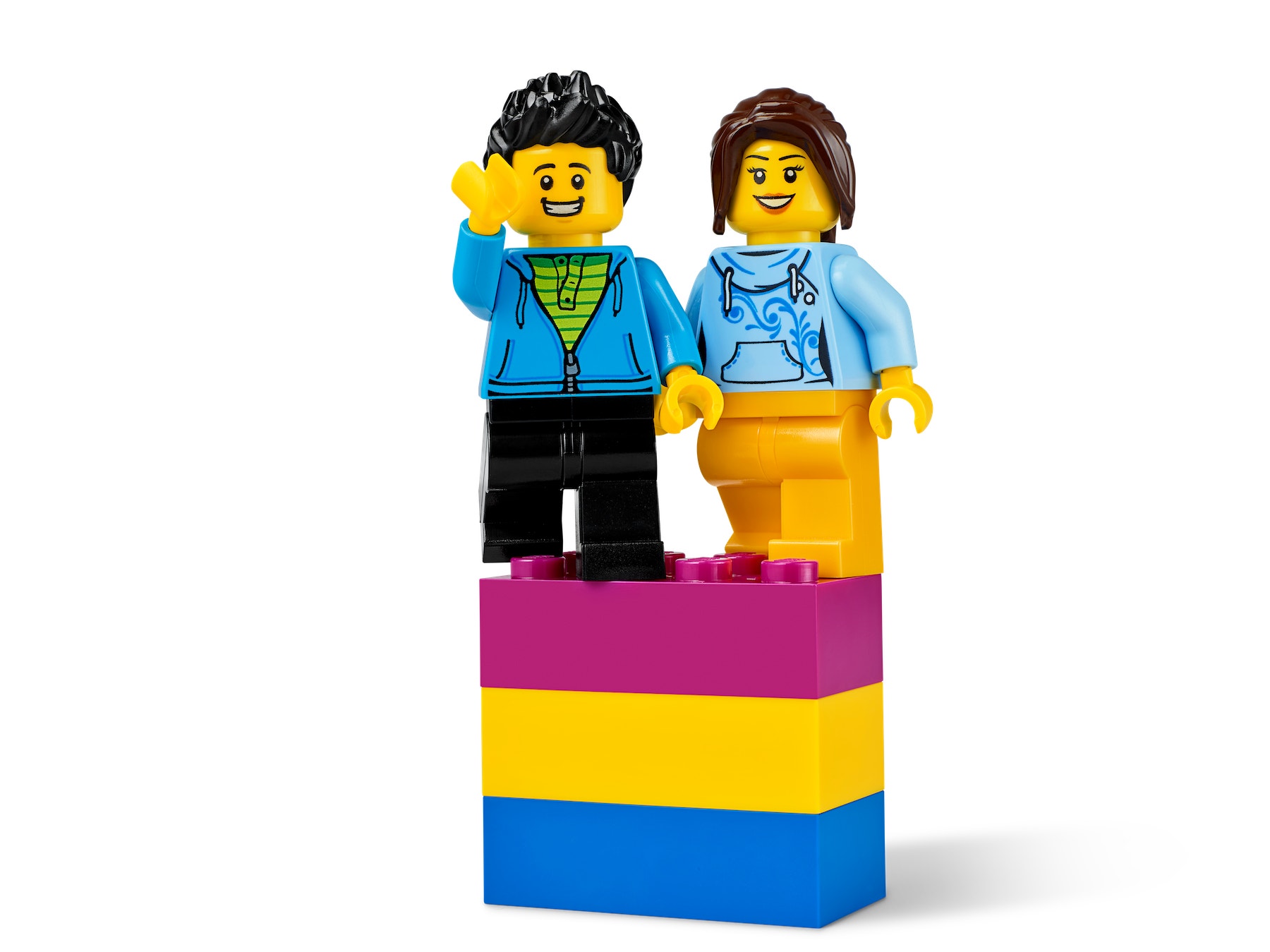Going the Distance
Program a Rhino to start and stop before it hits something.

Lesson Plan
1. Prepare
- Read through the student material in the LEGO® Education SPIKE™ App.
- If you feel it's needed, plan a lesson using the getting started material in the app. This will help familiarize your students with LEGO® Education SPIKE™ Prime.
2. Engage (3 Min.)
- Use the ideas in the Ignite a Discussion section below to engage your students in a discussion related to this lesson.
- Use the video to explain the lesson.
3. Explore (12 Min.)
- Have your students work in pairs to build the rhino model.
- Ask them to program the rhino to move one meter, stopping as close as possible to an upright LEGO brick, without touching it.
- Have each pair of students place their rhino 1 meter (39 in.) from the LEGO brick, run their program, and see how they did.
- Encourage them to record their calculations so they can then refer to them in the next two challenges.
4. Explain (10 Min.)
- Discuss different methods for calculating how to make the rhino stop exactly one meter from its starting position.
- Challenge your students to use their existing calculations to recalculate their programming block values to make the rhino stop at a distance of 120 cm (47 in.).
- Allow only one trial for this challenge.
5. Elaborate (15 Min.)
- Have your students program the Force Sensor on the rhino’s nose to stop the motors when it hits a "wall" of bricks.
- Ask your students to explain the difference between stopping at an object using calculations vs. using a sensor.
- Don't forget to leave some time for cleanup.
6. Evaluate
- Give feedback on each student's performance.
- You can use the assessment rubrics provided to simplify the process.
Ignite a Discussion
Start a discussion about how your students would normally learn how to use something new.
- Would they read the user manual?
- Would they use a quick start guide?
- Would they just tinker until they worked it out for themselves?
Have your students watch this video to see what they're about to do.

Building Tips
Tandem Build
This model can be built in two parts.
- Part A: the Rhino's body
- Part B: the Rhino's head
To limit building time, you can do all of this lesson except the final challenge using just the body (a simple driving base).

Wheel Circumference
Wheel circumference is an important concept in this lesson. The wheel you'll be using has a diameter of 5.6 cm (2.2 in.) and travels a distance of 17.6 cm (6.9 in.) per rotation.

Coding Tips
Main Program

Possible Solution

Other Programs

Differentiation
Simplify this lesson by:
- Substituting a distance that corresponds to a multiple of full wheel rotations:
▷ Given a wheel diameter of 5.6 cm (2.2 in.) and one wheel rotation covering 17.6 cm (6.9 in.), it takes 5 rotations to cover 88 cm (34.5 in).
- Encouraging your students to work with rotations instead of seconds, even if they feel comfortable with that unit. This will increase the precision of their driving base motion because rotations (or degrees) aren't linked to the speed of the motors.
Take this lesson to the next level by:
- Asking your students to change the speed of the rhino to 25% instead of 75%. Watch their reactions!
- Challenging your students to use smaller wheels. Observe how quickly they solve the challenge.

Assessment Opportunities
Teacher Observation Checklist
Create a scale that matches your needs, for example:
- Partially accomplished
- Fully accomplished
- Overachieved
Use the following success criteria to evaluate your students' progress:
- Students used observations to improve the results of their tests.
- Students used a systematic approach to solve a problem.
- Students demonstrated that they can apply previous findings to a new situation.
Self-Assessment
Have each student choose the brick that they feel best represents their performance.
- Blue: I've used estimation to solve this challenge.
- Yellow: I've used estimation and calculations to solve this challenge.
- Violet: I've found a unique and accurate solution to this challenge.
Peer-Assessment
Encourage your students to provide feedback to others by:
- Having one student score the performance of another using the colored brick scale above.
- Asking them to present constructive feedback to each other so that they can improve their group's performance during the next lesson.

Language Arts Extension
To incorporate language arts skills development:
- Challenge your students to make arguments for the most effective way to calculate the programming block values.
- At the end of the lesson, ask each student to explain their chosen method to the class.
Note: This will make for a longer lesson.
Math Extension
In this lesson, you'll already be exploring key math concepts, like:
- Estimating distances
- Using Pi x D to calculate wheel circumference
To add another math element:
- Ask your students to create a value table collecting wheel rotation and distance traveled.
- Challenge your students to use this table to predict the number of wheel rotations needed to travel a specified distance (e.g., 2.5 meters, 400 cm, 3500 mm).
Note: This will make for a longer lesson.
Teacher Support
Students will:
- Use estimation to evaluate distances
- Use test findings and deductive reasoning to improve a program
Common Core
CCSS.MATH.CONTENT.6.SP.A.2
Understand that a set of data collected to answer a statistical question has a distribution which can be described by its center, spread, and overall shape.
CCSS.ELA-LITERACY.SL.6.6
Adapt speech to a variety of contexts and tasks, demonstrating command of formal English when indicated or appropriate.




